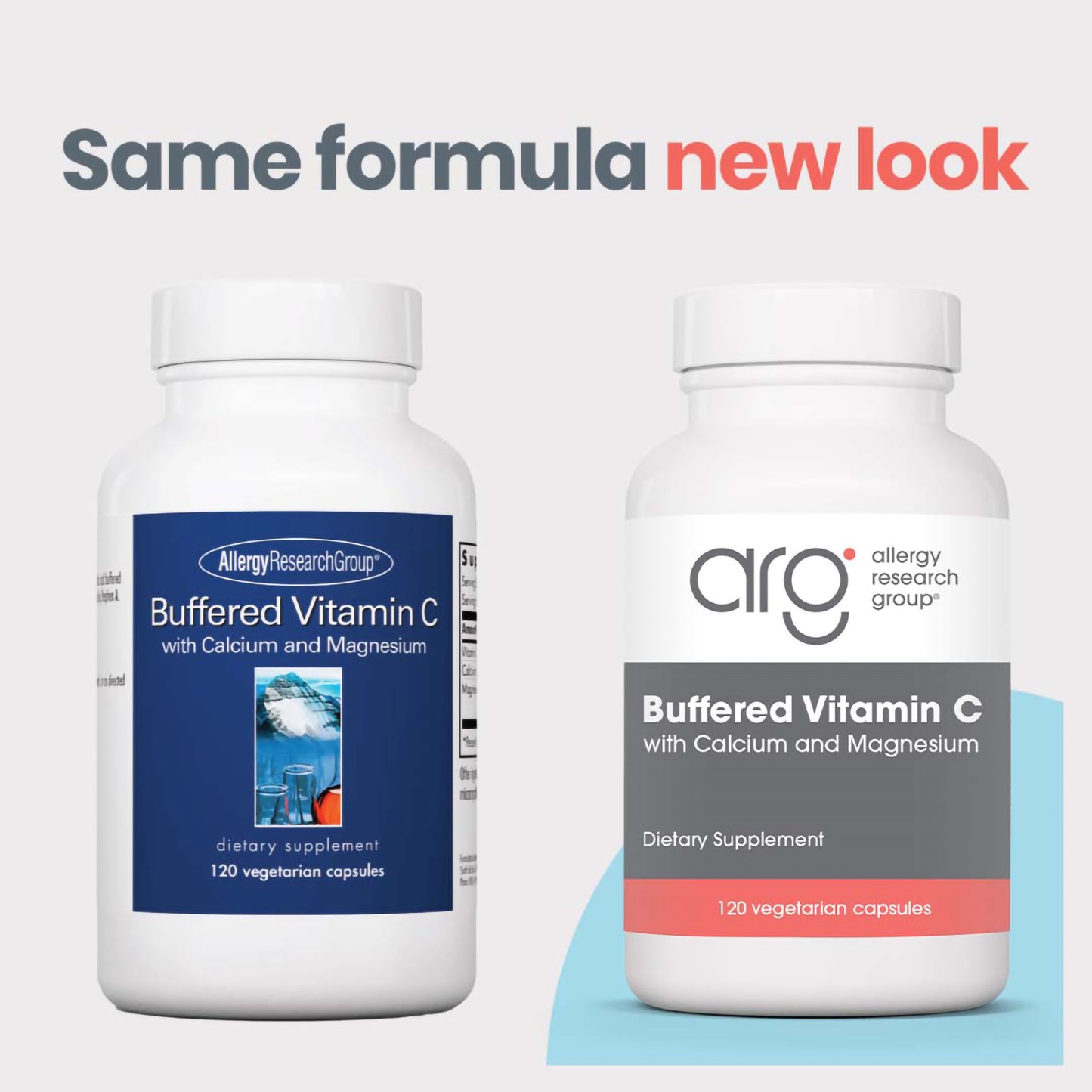













SKU:70010
Buffered Vitamin C
Buffered Vitamin C
with Calcium and Magnesium
Product Description
Vitamin C is widely associated with the body’s stress response.* Buffered Vitamin C Capsules provides 1000 mg of vitamin C per two-capsule serving, buffered with calcium and magnesium for enhanced gastrointestinal tolerance and steady absorption.* This non-acidic formula supports immune function, collagen production, antioxidant activity, and the body’s stress response, making it ideal for individuals with sensitive digestion or higher vitamin C needs.*
Couldn't load pickup availability







-
Ingredients -
Product Information -
Suggested Use
Ingredients:
Supplement Facts
Serving Size: 2 capsules
Servings Per Container: 60
Amount per Serving:
Vitamin C (cassava source): 1 g
Calcium (as Calcium Carbonate): 190 mg
Magnesium (as Magnesium Carbonate): 104 mg
Other Ingredients:
Hydroxypropyl methylcellulose, silicon dioxide, microcrystalline cellulose, stearic acid, magnesium stearate.
Variations in product color may occur Keep in a cool, dry place, tightly capped.
Gentle, gradual-release vitamin C for immune, collagen, and stress support*
What It Does
Buffered Vitamin C Capsules provides 1000 mg of vitamin C per two-capsule serving, buffered with calcium and magnesium to support immune function, connective tissue health, and the body’s stress response.* Its gentle formulation makes it ideal for individuals who may experience gastrointestinal sensitivity to regular ascorbic acid.*
How It Works
• Buffered with Calcium and Magnesium: Combining ascorbic acid with calcium and magnesium carbonates helps neutralize pH for improved GI tolerance and sustained absorption.*
• Immune Function: Vitamin C supports innate and adaptive immunity, regulates cytokine signaling, and aids white blood cell activity and histamine metabolism.*[1-2]
• Antioxidant Support: As a water-soluble antioxidant, vitamin C helps regenerate glutathione and neutralize free radicals produced during immune and metabolic activity.*[3]
• Collagen Synthesis: Essential for the production of collagen and elastin, vitamin C contributes to the health of skin, joints, bones, and periodontal tissue integrity.*[4-5]
• Stress Response and Brain Function: Concentrated in the adrenal glands and brain, vitamin C is a cofactor in the synthesis of norepinephrine and serotonin, supporting mood, alertness, and resilience under stress.*[6-8]
• Sustained Delivery: Buffered vitamin C is absorbed more gradually than standard ascorbic acid, helping to maintain stable blood levels over time.*
Who It’s For
Buffered Vitamin C Capsules is ideal for individuals seeking a well-tolerated, effective form of vitamin C to support immunity, skin and joint health, and adrenal function, especially those with sensitive digestion or higher daily requirements.*
Special Features
ARG pioneered buffered vitamin C and continues to provide high-purity, allergen-free products designed with sensitive individuals in mind.*
References
1. Moritz B, et al. J Nutr Biochem. 2020;85:108459. doi:10.1016/j.jnutbio.2020.108459
2. Mousavi S, et al. Eur J Microbiol Immunol (Bp). 2019;9(3):73–9.
3. Pullar JM, et al. Nutrients. 2017;9(8):866. doi:10.3390/nu9080866
4. Malmir H, et al. Br J Nutr. 2018;119(8):847–58.
5. Brzezińska O, et al. Nutrients. 2020;12(8):2394. doi:10.3390/nu12082394
6. Tada A, Miura H. Int J Environ Res Public Health. 2019;16(14):2472. doi:10.3390/ijerph16142472
7. Harrison FE, May JM. Free Radic Biol Med. 2009;46(6):719–30.
8. May JM, Harrison FE. Antioxid Redox Signal. 2013;19(17):2068–83
9. Travica N, et al. Front Aging Neurosci. 2019;11:72. doi:10.3389/fnagi.2019.00072
Suggested use:
As a dietary supplement, take 2 capsules daily between meals, or as directed by a healthcare practitioner.
Warning:
If you are pregnant or lactating, have any health condition or are taking any medication, consult your healthcare practitioner before use.
Store in a cool, dry place, tightly capped, away from light. Keep out of the reach of children. Use only if safety seal is intact. Variations in product color may occur.
Stay Connected
Sign up and we’ll keep you up to date on the latest news, clinical education resources, product innovations and promotions.
